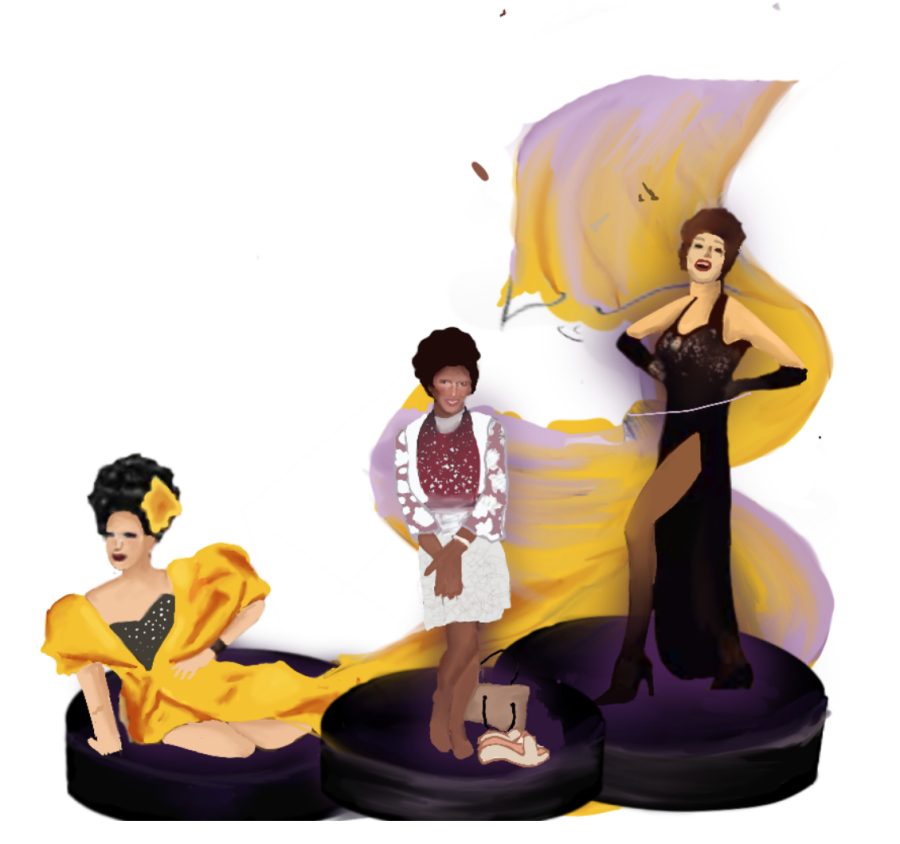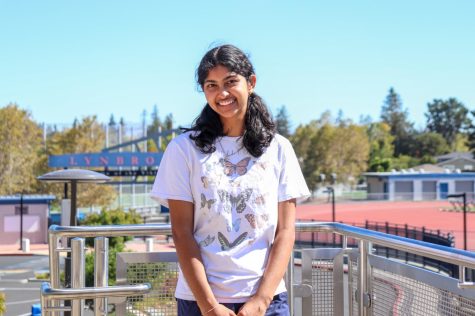Don’t “Drag” Drag
Graphic illustration by Eileen Zhu
Drag — the art of dressing up in hypermasculine or hyperfeminine clothing and makeup — has risen in popularity through social media apps TikTok and Instagram.
May 8, 2023
Strutting down runways, singing and dancing to captivating music while advocating for charitable causes, drag artists foster a culture of their own. Whether it be the early English Shakespeare plays of the 1500s or recent involvement of drag in political policies, the art form boasts a rich cultural history.
Drag — the art of dressing up in hypermasculine or hyperfeminine clothing and makeup — has risen in popularity through social media apps TikTok and Instagram, which have introduced the art to mainstream popular culture. Now, drag is typically seen as a form of entertainment as artists perform comedy, singing, dancing or lip-syncing, however, a number of drag artists have opted away from performing at all, serving as figures in their respective communities. Over time, the art of drag has evolved and adapted to fit the needs and desires of each generation.
“Drag has been around since the beginning as one of the earliest forms of self-expression for LGBTQ+ people,” said Gender and Sexuality Alliance club officer Spencer Eppstein. “It’s precedent for all of queer history for the most part, and it’s also very important today.”
The origins of drag can be traced back to the ancient Greeks and Romans, around 240 B.C., when performers in plays wore masks and exaggerated costumes. Due to societal norms, men typically played both male and female roles, distinguished by excessive portrayal of feminine features.
During the 16th and 17th centuries, men often played “trouser roles” in plays, by explicitly playing female roles during Shakespearean plays with voluminous skirts and corsets. Historians believe that one possible origin of the word is from how the dresses and petticoats would “drag” along the stage floor, or that it once was an acronym for “Dress as a Girl”.
During the 1900s, drag had a heavy influence on Vaudeville performers — a form of live entertainment consisting of comedians, musicians and magicians who traveled across the nation to perform in a variety of theater shows. Specifically in the 1920s, the number of drag shows spiked across America, as an illegal form of entertainment within speakeasies during the Prohibition Era. During the Harlem Renaissance, drag ball culture was not only popular among the LGBTQ+ community, but also attracted many straight, artistic and curious audiences.
In later decades, the popularity of these balls spread among the gay community and became a safe space for gay men to gather. To mainstream society, it was deemed illegal and immoral, yet despite this, these balls would continue to occur and became a crucial aspect in maintaining LGBTQ+ culture. They created a welcoming environment, where members of the community could connect with one another. Additionally, they helped establish and define queer culture well into the decade and gave many the chance to explore their sexual and gender identity or expression.
“A lot of the time, when we think of gay people, drag queens are included,” Eppstein said. “For many, drag offers a form of self expression that allows them to be how they truly are, without being judged by those around them. It also provides, for the most part, a very accepting community, if you can find the right part of it. It just makes you happy.”
Throughout the 1970s-80s, drag balls and culture increasingly integrated African American and Latino LGBTQ+ communities into the art, providing a safe space for performers to showcase their skills and culture. Specifically, performers like Divine and RuPaul rose to fame by pushing the boundaries of what defined “drag” and what was considered acceptable in mainstream culture.
Successful shows like RuPaul’s Drag Race took the entertainment of drag a step further into the 21st century. Since then, drag has become much more mainstream, with drag performers of all genders and backgrounds being celebrated for their creativity, talent and individual ethnic cultures and styles.
“Drag isn’t restricted by gender or sexuality, because anyone can do it,” Eppstein said. “I think that a lot of performers use drag as a way to express their gender while still identifying as straight. Also, it’s very entertaining, so it’s kind of a bridge between the queer community and mainstream media.”
However, several conservative politicians have criticized drag as being immoral or inappropriate, seeking to restrict or ban drag performances within certain contexts. In 2018, the Bristol City Council in the U.K. faced intense backlash after it was revealed that the council had paid for a drag queen to read stories to children during library events. Protestors outside of the library eventually heavily disrupted the event, causing its discontinuation. Similarly, in the U.S., controversy surrounding drag queen story hours has seen right-wing activists using rhetoric that these events promote “inappropriate content” to young children, with protests surrounding libraries and bookstores.
“The rise in extreme anti-LGBTQIA+ hate rhetoric and the laws rapidly evolving around them across the U.S. from far-right extremists is ugly and unrelenting,” said Juanita MORE!, San Francisco-based drag queen and Absolute Empress 56 of the Imperial Council, the world’s oldest LGBTQ+ nonprofit. “Their message is poisonous and a sideshow to distract from more pressing issues.”
Criticism has sparked retaliation from drag performers, who argue that drag is an important and valuable form of self-expression crucial to the LGBTQ+ culture. Many performers continue to speak out against attempts to limit their public performances, arguably part of their right to freedom of speech.
“As the haters continue to show their faces in our government, on the news and social media, we must continue to show ours,” MORE! said.
As drag evolves to fit the needs of the community and inspire new generations of performers, LGTBQ+ rights and visibility continue to be debated political issues around the world. Drag remains a significant aspect of maintaining morale and pride for the LGBTQ+ community, fostering safe spaces for gender and sexual expression, serving community organizations and sharing success stories.
“Everyone needs to share their story with their friends, families, and allies; we need their voices,” MORE! said. “Tell everyone about your triumphs and struggles of being queer; this will hopefully trigger something in those who hate, as a simple reminder that we are all human and made of love.”





























































